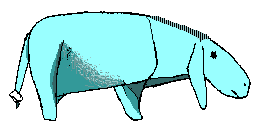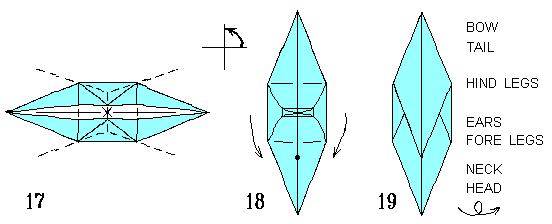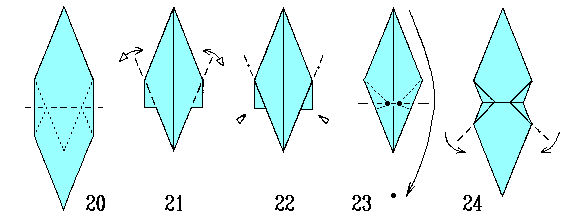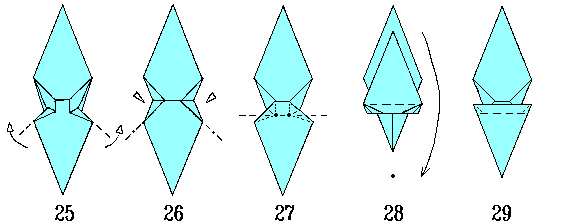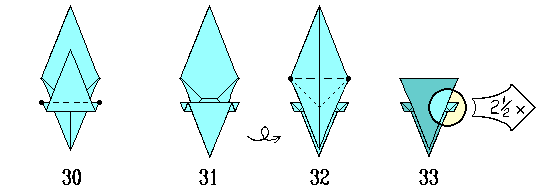
- The hidden part of the skull has a hidden flap on each side (the jowls).
Tuck a jowl into the inside pocket of an ear.
Repeat behind.
Stand Eeyore up.
Adjust the head, feet, and ears.
- (Magnified view of the finished model.)
Some variations:
- Pinch the tail to narrow it (as shown).
- Fluff the model out, by spreading the tops of the hind leg creases,
and bending the feet inward (as shown).
- Shape the eyes and mouth (as shown).
- Color change the bow at Steps 84-88 (as shown).
- Color change the tip of the tail to match the body,
(as shown) after color changing the bow.
- Open sink the ears at Steps 77-78.
- Point the ears up by double inside reverse folding them
instead of Steps 73-78.
(Variations F and G go well together.)
- Narrow the neck by inside reverse folding
the lowest edge at step 68. Repeat behind.
- At Step 58, make a dragon or Kerberos
(three-headed dog) a la Montroll.
|
